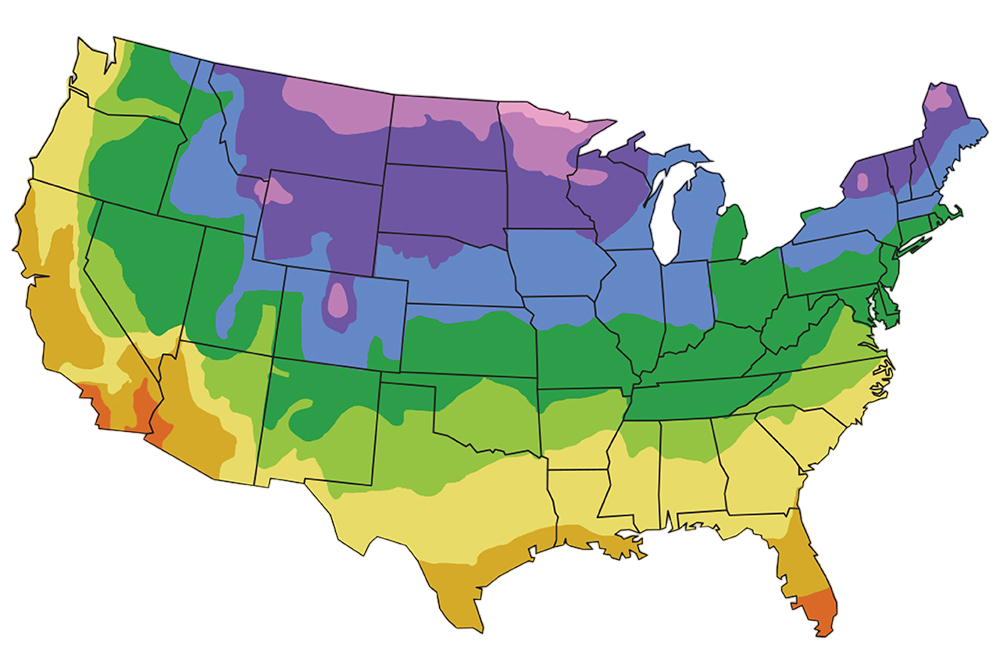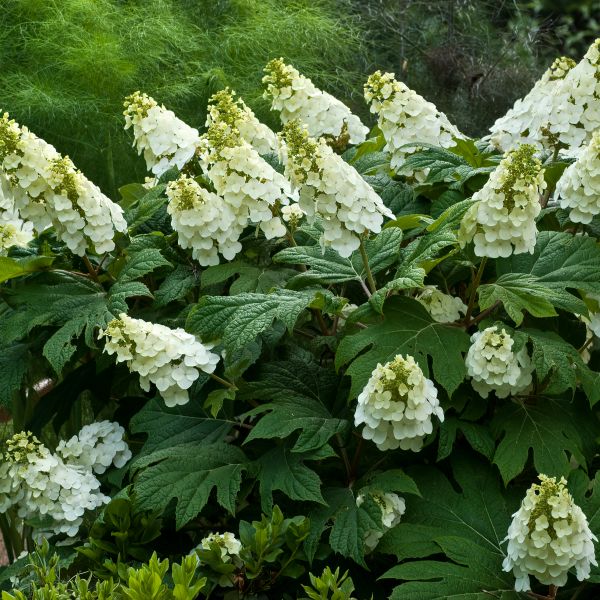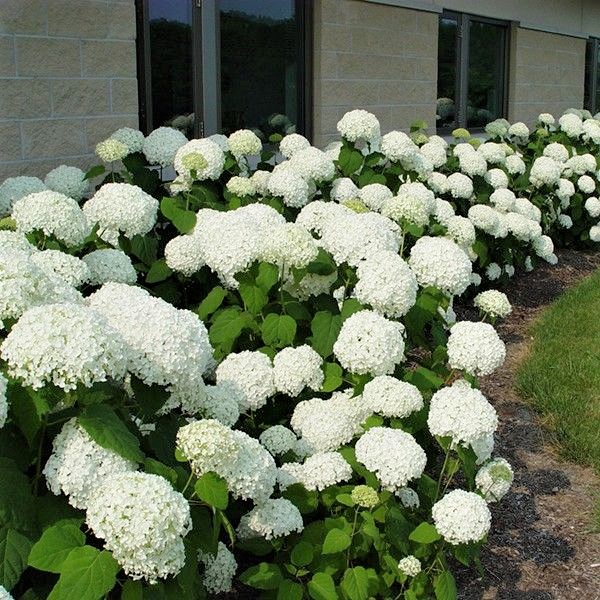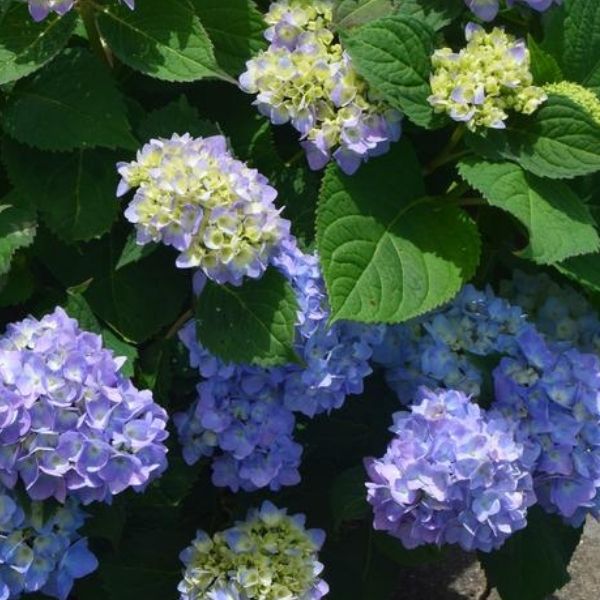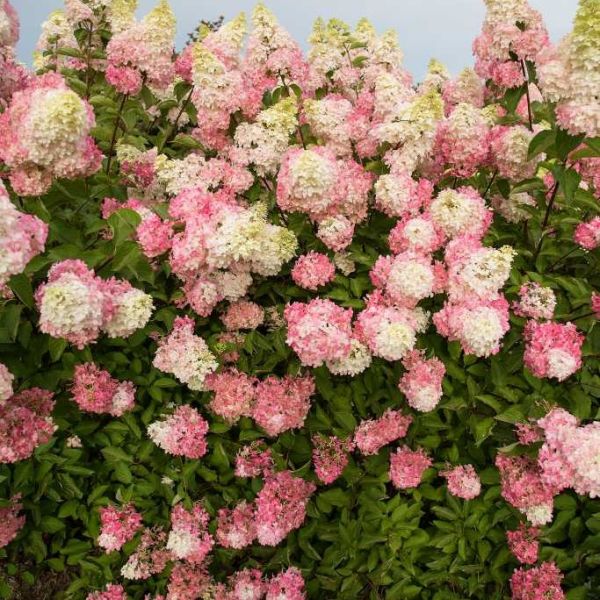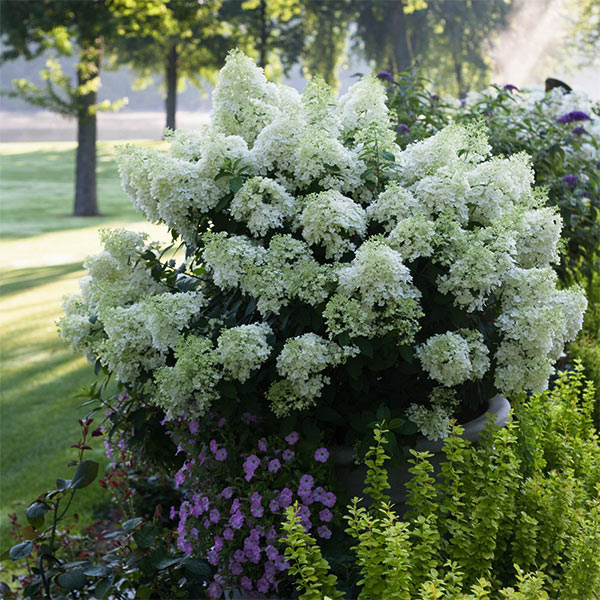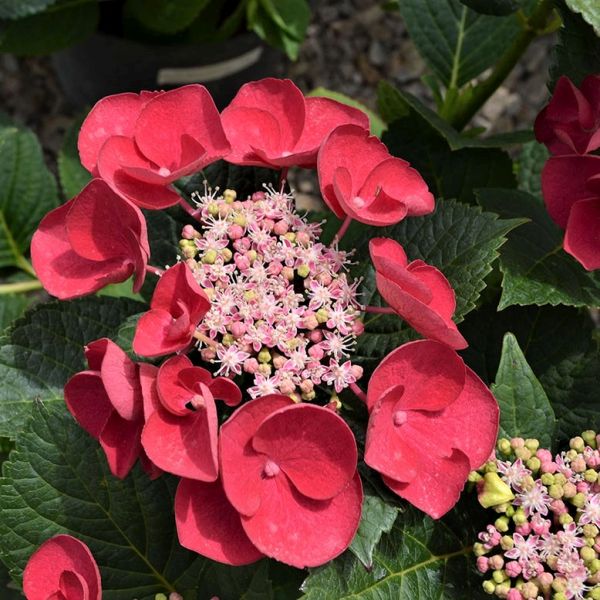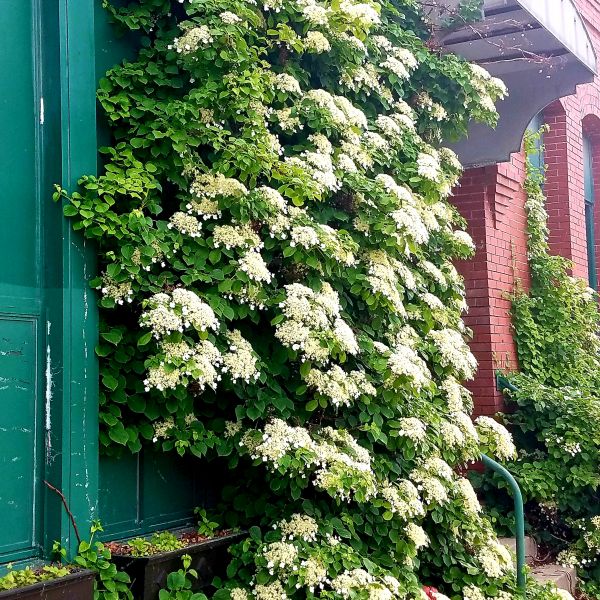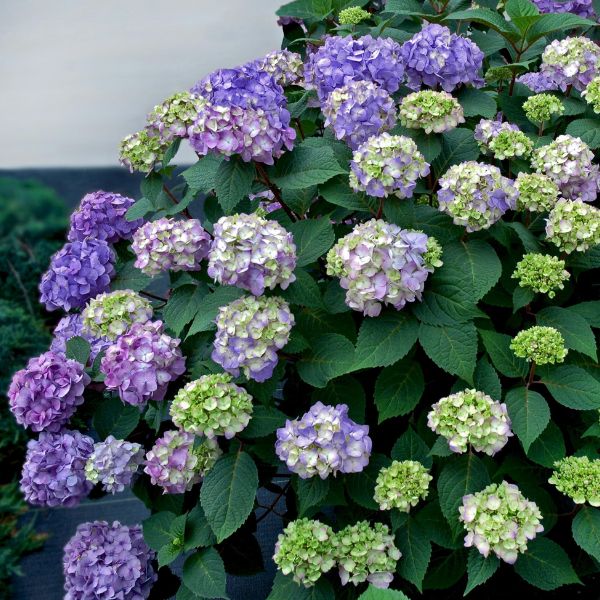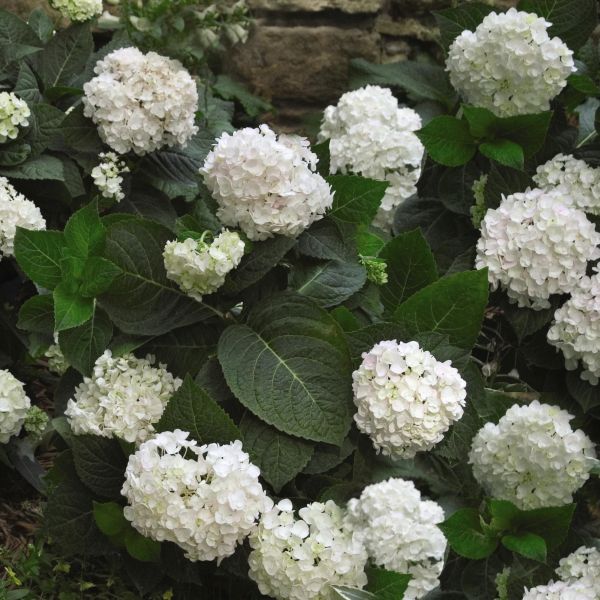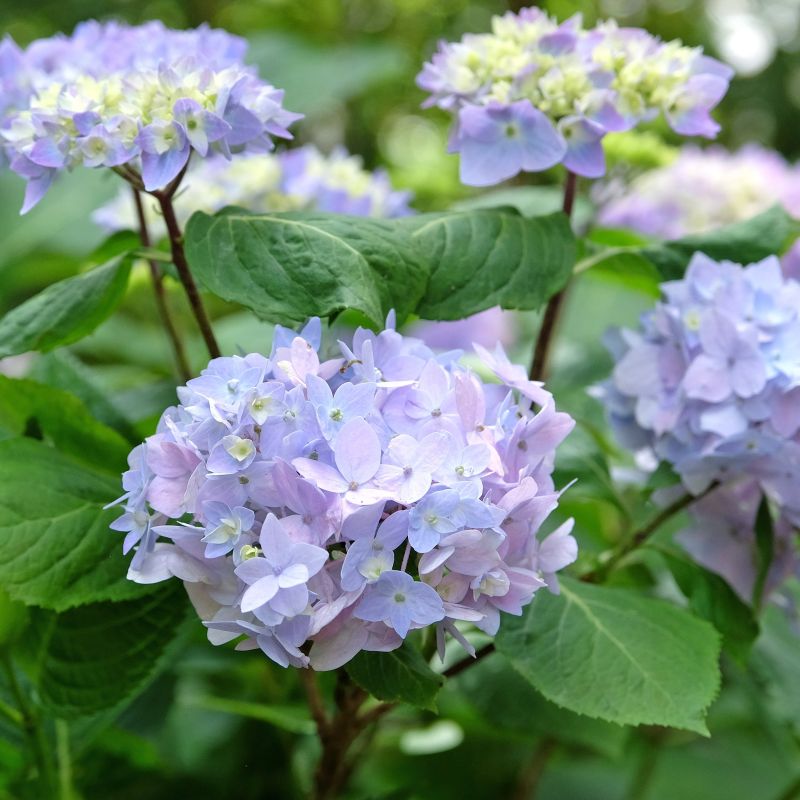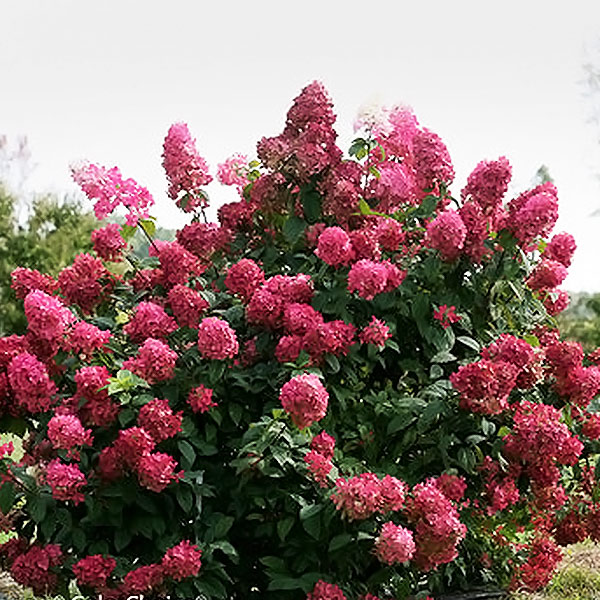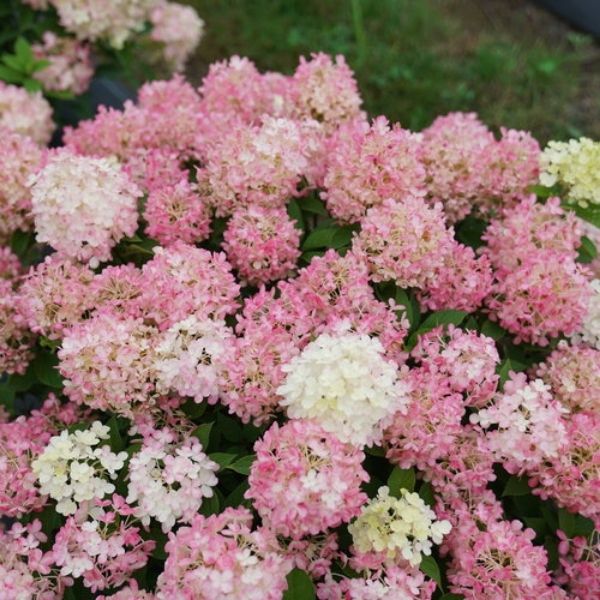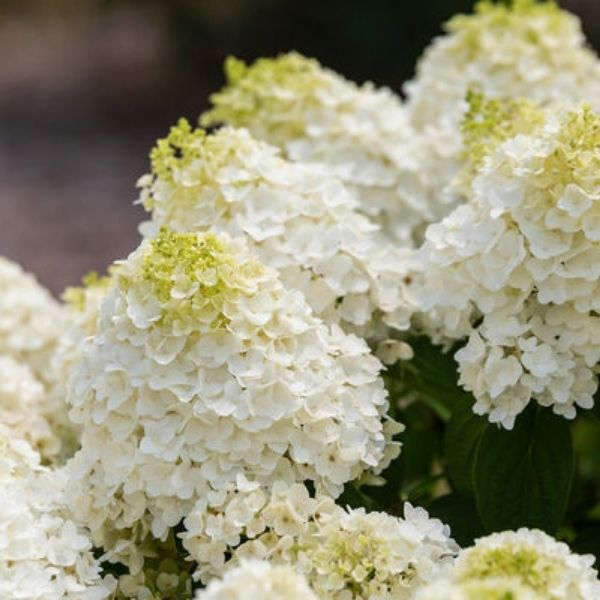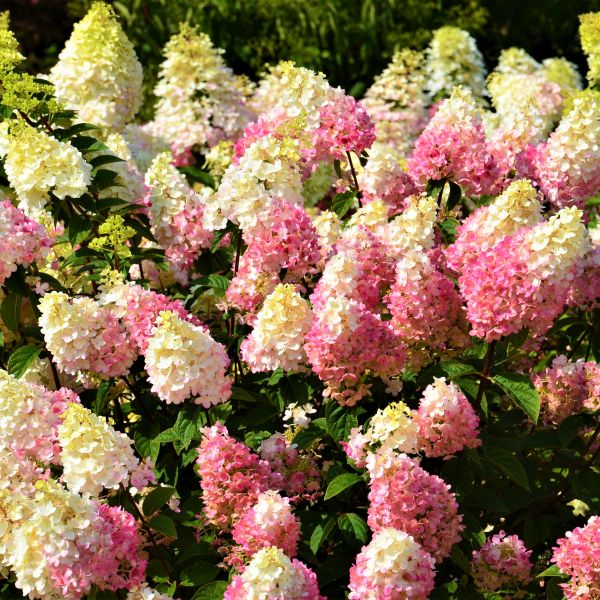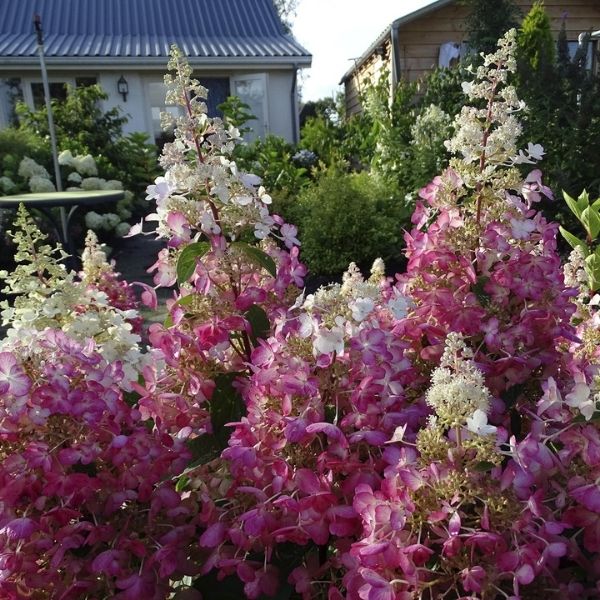
Candelabra Hydrangea
Hydrangea paniculata 'Hpopr013'
20 reviews
Candelabra Hydrangea
Hydrangea paniculata 'Hpopr013'
20 reviews
2.5 Gallon
We are sorry, product is currently out of stock due to seasonal availability. Please check the "Related plants available in your area" section below
Not just beautiful - intentionally selected by ShrubHub's 3D landscape design team to fit real-world spaces and maximize yard potential.
Why Candelabra Hydrangea?
Candelabra hydrangea (Hydrangea paniculata ‘Hpopr013’) is a popular ornamental shrub due to its unique cone-shaped flower clusters that resemble candelabras. This hydrangea cultivar is prized for its sturdy branches that can support the heavy weight of its abundant blooms, which start out white or light green before turning pink or red in the fall. Versatile and easy to care for, the candelabra hydrangea is perfect for adding interest and color to gardens, borders, and containers alike.
Related plants available in your area
Sunlight
Candelabra Hydrangea requires partial to full sunlight for optimal growth and flowering.
Watering
Candelabra Hydrangeas have medium watering requirements. They prefer moist, well-drained soil, and it is important to keep the soil consistently moist but not waterlogged. Water deeply and regularly, especially during dry periods, to ensure they thrive.
Fertilizing
Candelabra Hydrangea requires a balanced fertilizer with an N-P-K ratio of 10-10-10 or 14-14-14. It should be applied in early spring before new growth emerges and can be repeated once or twice during the growing season.
Introducing Candelabra Panicle Hydrangeas: A Dazzling Addition to Your Garden
Are you looking for a plant that will add a touch of dazzle and glamour to your garden? Look no further than Candelabra Hydrangea! Known as Hydrangea paniculata, this magnificent plant is a showstopper, boasting stunning, cone-shaped flower buds that transform your landscape into a captivating floral wonderland. From its vibrant blooms to its easy-care nature, Candelabra Hydrangea is a must-have addition to any garden.
Prepare to be entranced by the beauty of Candelabra Hydrangea. Its enormous candle-like flowers, which appear in the summer and early fall, boast an array of hues that range from delicate pinks and whites to stunning purples and blues. Each flowerhead provides a mesmerizing display, almost appearing like chandeliers that light up your garden. Whether used as a standalone centerpiece or as part of a colorful garden bed, Candelabra Hydrangea is sure to be a focal point that leaves your guests in awe.
The Candelabra Panicle Hydrangea is not just a one-season wonder. This exceptional plant offers year-round interest to your garden. It's an elegant, deciduous shrub with distinct, tiered branches, and in the fall, its foliage reveals a brilliant display of fiery reds and oranges. Even in winter, its bark maintains an interesting texture, providing a stunning visual interest to your garden.
You don't have to be a gardening guru to acquire the splendor that Candelabra Hydrangea brings to a garden. This low-maintenance shrub thrives in partial shade, with moist but well-drained soil. It's also largely disease-resistant, making it a great addition to your garden with less worry about plant diseases. With its effortless beauty and low-maintenance
requirements, Candelabra Hydrangea is an excellent choice for any gardener, from beginners to seasoned horticulturists.
Candelabra Hydrangea boasts an adaptable nature that makes sense for a variety of landscape styles. Whether you have a traditional, modern, or eclectic garden, this shrub is a perfect fit. Its tiered branches and show-stopping blooms create an interesting and striking look that adds glamour to your garden. It also does well in various garden spaces, from small urban gardens to larger estates. Place it along a garden path, add it to a garden bed, or use it to create a dramatic backdrop in your garden. The versatility of Candelabra Hydrangea is truly unmatched.
Elevate your garden to a new level of enchantment and glamour with Candelabra Hydrangea. Its remarkable blooms, year-round interest, and easy-care nature make it an exceptional choice for any gardener. Whether you're a seasoned horticulturist or a beginner, this shrub will bring a touch of magic to your outdoor space.
Embrace the beauty and witness the wonders of nature with large flower panicles that grace your garden! Order Candelabra Hydrangea today!
Plant Information:
| Botanical Name: | Hydrangea paniculata 'Hpopr013' |
| USDA Zones: | 3 - 8 |
| Water: | Moderate |
| Exposure: | Full Sun |
| Soil Needs: | Well Drained |
| Mature Height: | 4 - 6 feet |
| Mature Spread: | 4 - 6 feet |
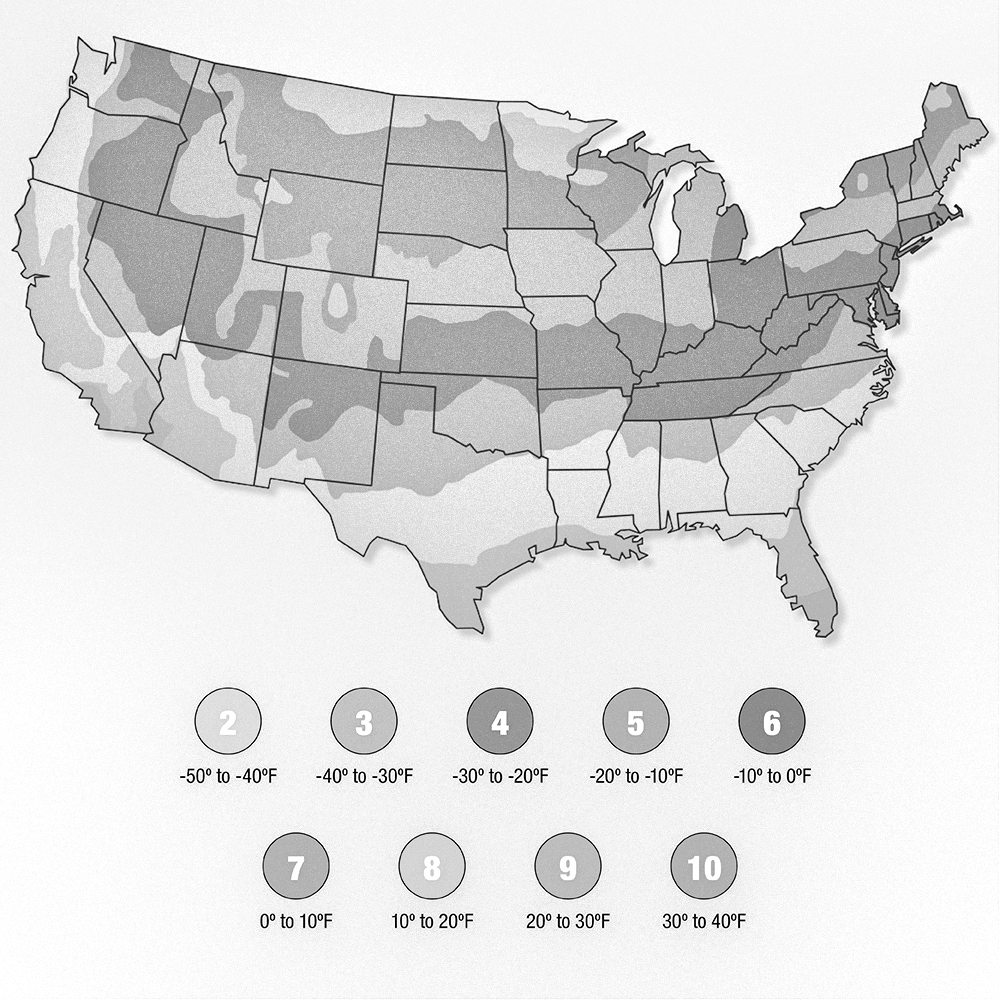

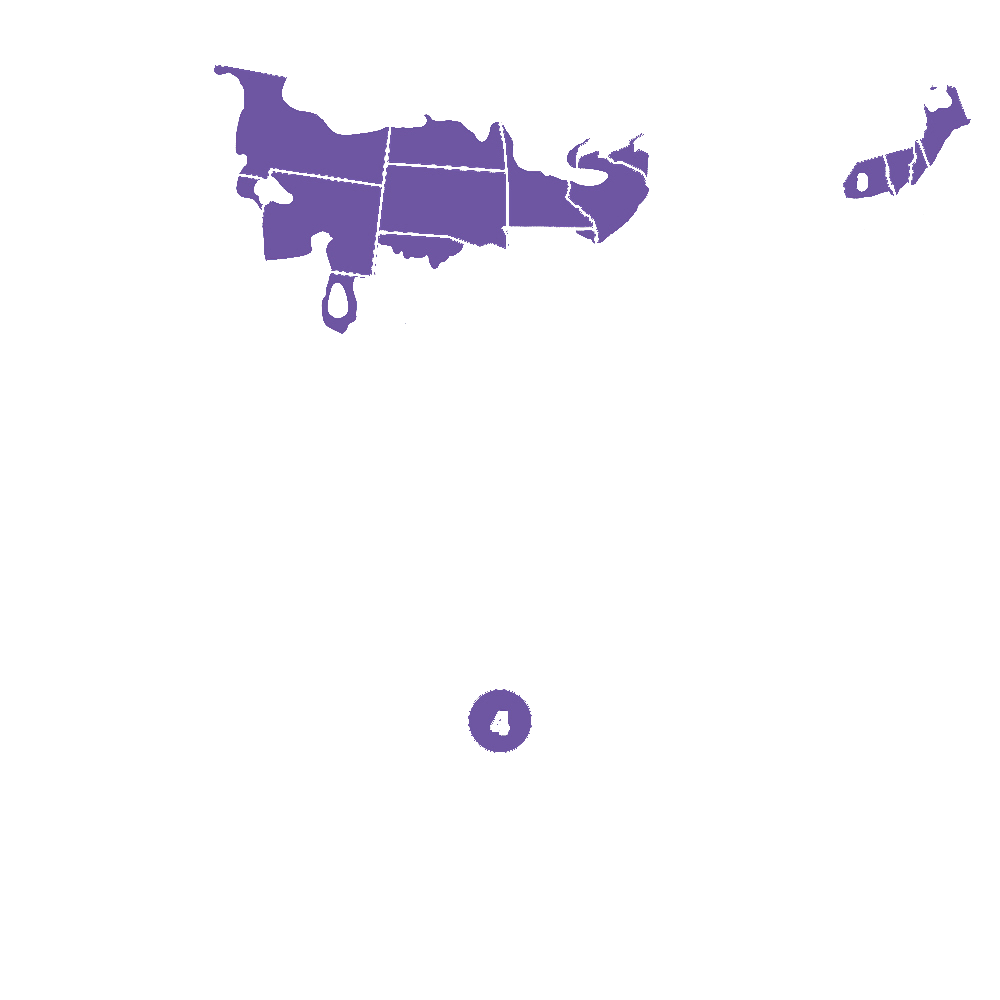
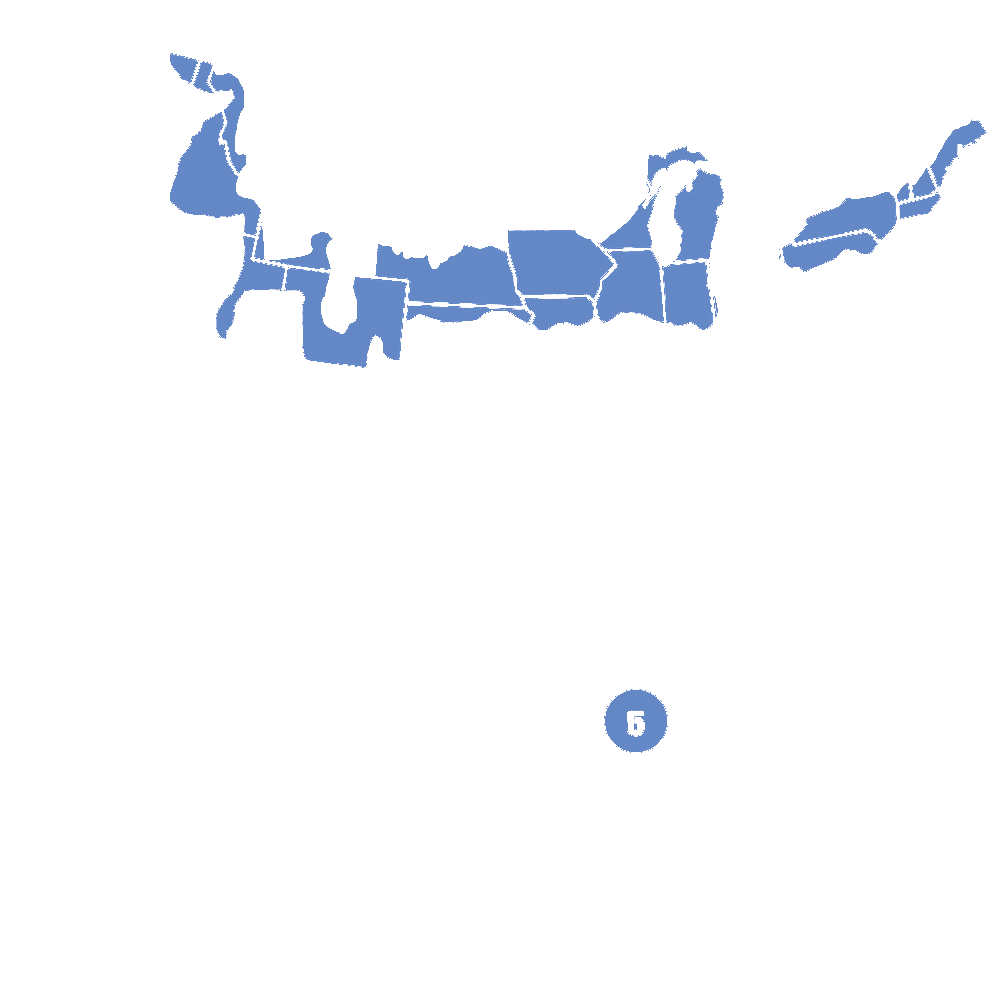
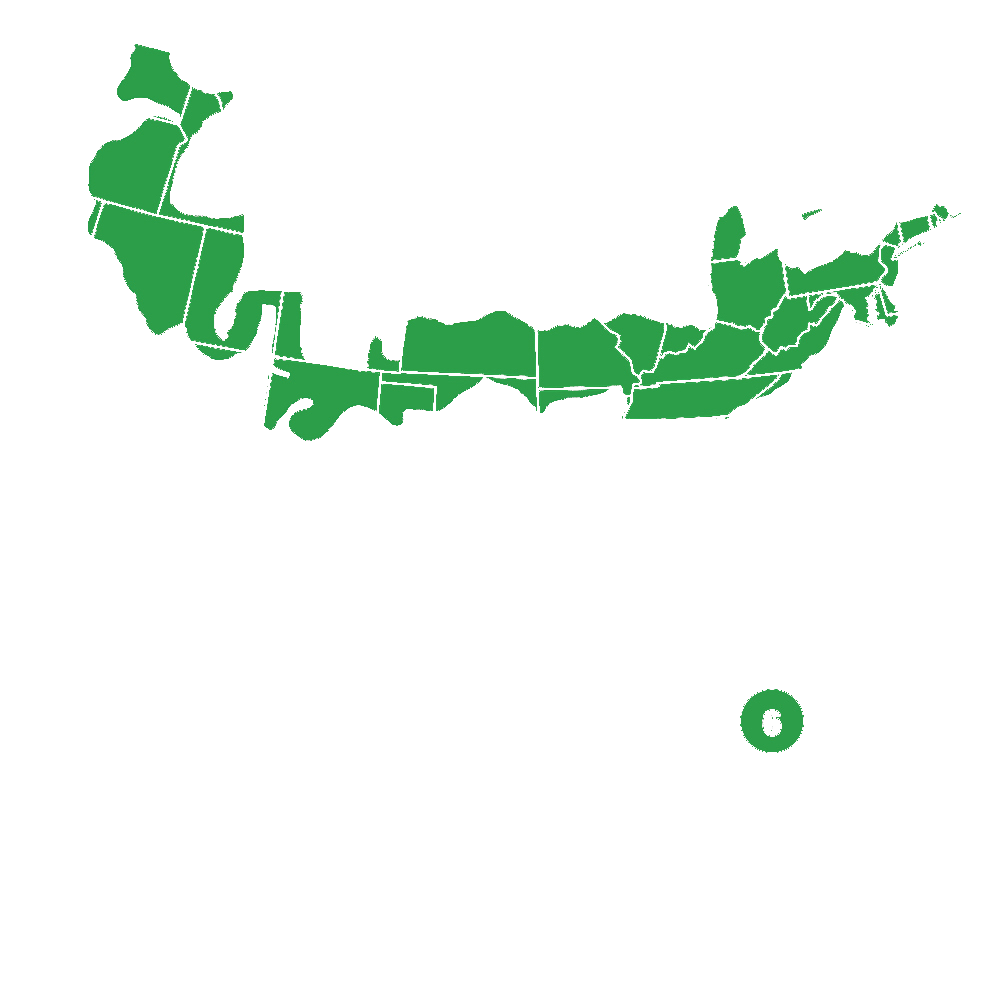

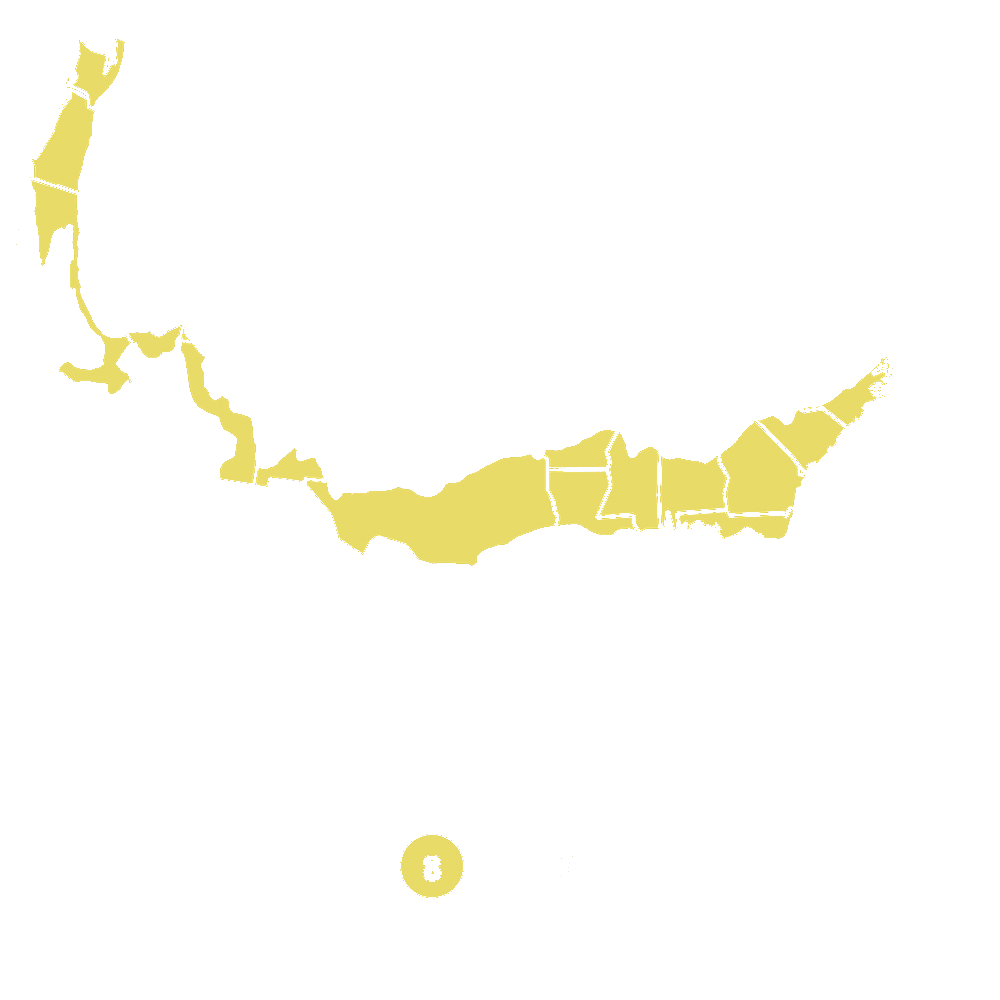
Pollination Info
Pollination Information for Candelabra Hydrangea
Candelabra Hydrangea (Hydrangea paniculata ‘Hpopr013’) is a deciduous shrub that can grow up to 10 feet tall and spread wider than its height. The plant is native to Japan and China and is known for its showy, cone-shaped flower clusters that bloom in mid-summer and last well into fall.
Pollination Mechanism
The pollination mechanism of Candelabra Hydrangea is not well-known, but it is believed to be primarily insect-pollinated. Bees, butterflies, moths, and other insects are attracted to the plant’s fragrant flowers and may transfer pollen from one flower to another as they gather nectar and pollen.
The plant may also be self-fertile, meaning that it can produce viable seeds from its own pollen. However, cross-pollination by insects is likely to increase genetic diversity and may result in stronger, more vigorous plants.
Cultivation Requirements for Pollination
To ensure good pollination of your Candelabra Hydrangea plant, it is important to provide a suitable habitat for pollinators. This may include planting other flowering plants nearby to provide a source of nectar and pollen, providing nesting sites for bees and other insects, and avoiding the use of pesticides that may harm pollinators.
Candelabra Hydrangea is hardy to USDA zones 3-8 and prefers well-drained, fertile soil with a neutral to slightly acidic pH. The plant should be watered regularly, especially during periods of drought, and may benefit from occasional fertilization with a balanced, slow-release fertilizer.
Conclusion
Candelabra Hydrangea is a beautiful and easy-to-grow shrub that can be an important source of nectar and pollen for bees, butterflies, and other insects. By providing a suitable habitat for pollinators and cultivating the plant in the right conditions, you can enjoy the plant’s stunning flowers and contribute to the health and diversity of your local ecosystem.
FAQ
Candelabra Hydrangea (Hydrangea paniculata ‘Hpopr013’)
FAQ:
What is a Candelabra Hydrangea?
A Candelabra Hydrangea (Hydrangea paniculata ‘Hpopr013’) is a deciduous shrub known for its large and showy flower clusters. The flowers are arranged in a pyramid shape, hence the name candelabra.
How tall does a Candelabra Hydrangea grow?
A Candelabra Hydrangea can grow up to 10-15 feet tall and 6-10 feet wide.
What is the blooming season for Candelabra Hydrangea?
The Candelabra Hydrangea blooms in the late summer to fall, from July to September.
What is the ideal location for planting Candelabra Hydrangea?
The Candelabra Hydrangea thrives in partial shade and well-drained soil. It can also tolerate full sun but may require more water. It is recommended to plant in a sheltered area to protect it from strong winds.
How do you prune a Candelabra Hydrangea?
You can prune a Candelabra Hydrangea in late winter or early spring before new growth appears. Cut back about one-third of the previous year's growth, removing any damaged or weak branches.
How do you take care of Candelabra Hydrangea?
Candelabra Hydrangeas require regular watering, especially during the hot and dry season. Mulching around the base of the plant can help maintain soil moisture and keep the roots cool. Fertilize in early spring with a slow-release fertilizer or compost. It is also recommended to protect the plant during cold winter months, by covering it with burlap or other protective material.
Can Candelabra Hydrangea be grown in containers?
Yes, Candelabra Hydrangea can be grown in large containers but requires frequent watering and fertilizing to sustain growth and flowering. It is also recommended to repot the shrub every few years.
Planting & Care
Planting & Care for Candelabra Hydrangea
Planting
Candelabra Hydrangea (Hydrangea paniculata ‘Hpopr013’) should be planted in the spring or fall in well-draining, fertile soil. Choose a location that receives full sun to part shade (at least 4-6 hours of direct sunlight per day).
Dig a hole that is two times the width of the root ball and as deep as the container. Gently remove the plant from the container and loosen the roots. Place the plant in the hole and backfill with soil, making sure to firm the soil around the plant. Water thoroughly.
Care
- Watering: Candelabra Hydrangea should be watered deeply once a week, or more often during hot, dry weather. Avoid overwatering, as this can lead to root rot.
- Fertilizing: Feed in the spring with a balanced, slow-release fertilizer. Avoid fertilizing in the fall, as this can stimulate new growth that may not have time to harden off before winter.
- Pruning: Candelabra Hydrangea blooms on new wood, so it can be pruned in the fall or winter before new growth appears in the spring. Prune back to 2-3 pairs of buds to encourage a bushier, more compact plant.
- Deadheading: To encourage continued blooming, remove spent flowers as soon as they wilt.
- Winter Care: Candelabra Hydrangea is hardy in USDA zones 3-8. Mulch around the base of the plant in the fall to protect the roots from frost heaving.
Check Out These Verified Customer Reviews:
Customer Reviews
4.8 out of 5 based on 20 reviews
Thank you! Your review has been submitted.
The Candelabra Hydrangea exceeded my expectations. The customer service was also very helpful in answering my questions.
I am very happy with my purchase of the Candelabra Hydrangea. The only issue was a small delay in shipping, but the plant arrived healthy and beautiful.
Lovely addition to my garden, thriving well.
Item has been added to your cart.

